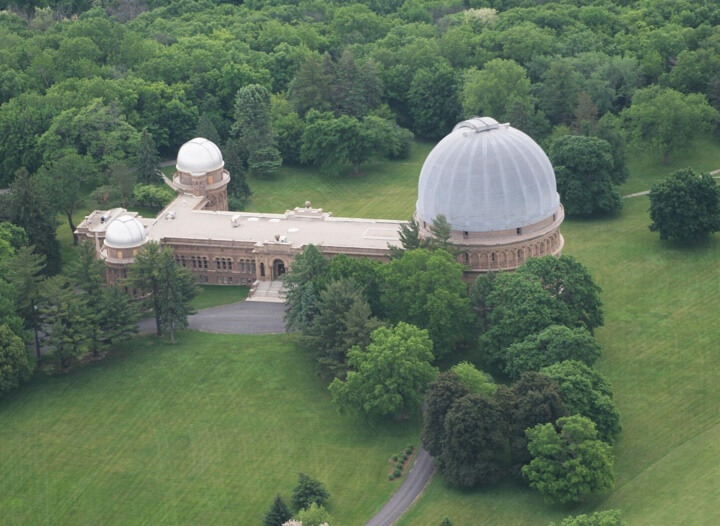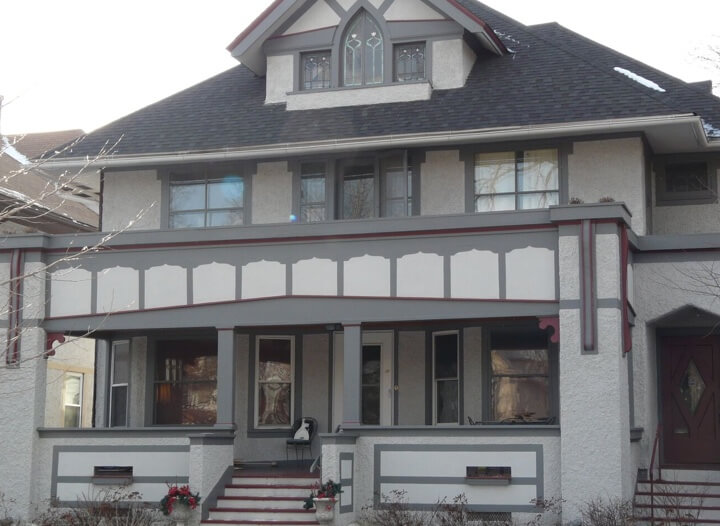Fortune Restoration’s work at the William G. Fricke house in Oak Park, designed by Frank Lloyd Wright has been extensive throughout the years. This Frank Lloyd Wright masterpiece has undergone stucco repairs, exterior house painting, and a variety of carpentry restoration projects. Fortune Restoration has been the exterior paint contractor and masonry contractor for this Oak Park landmark home for the last 16 years.
In 1893, Frank Lloyd Wright founded his architectural practice in Oak Park, a quiet, semi-rural village on the Western edges of Chicago. It was at his Oak Park Studio during the first decade of the twentieth century that Wright pioneered a bold new approach to domestic architecture, the Prairie style. Inspired by the broad, flat landscape of America’s Midwest, the Prairie style was the first uniquely American architectural style of what has been called “the American Century.”
In 1901, the Fricke house was designed during Wright’s brief partnership with the architect Webster Tomlinson. The client, William G. Fricke, was a partner in the school-supply firm of Weber, Costello, Frickie. The house exhibits many key elements of Wright’s mature Prairie style, including its stone water table, horizontal banding, overhanging roof eaves, shallow hipped roof, and stucco exterior. Nevertheless, tiered geometric masses, including another angular prow-like projection adjacent to the front door; and a centrally located three-story tower with long, thin windows and mullions, lend the building a vertical appearance. Wright may have been responding to the compact scale of the lot on which the house was built. Indeed, he also dealt with the narrow tract of the Isidore Heller house by building vertically. Wright appears to have abandoned the half-timbered surface treatment found in other contemporary designs in favor of a more reductive scheme that resembles the exposed structural armatures found in traditional Japanese architecture.
During his early years in Chicago, Wright did not operate in a vacuum. His work was supported and often enhanced by a group of pioneering Midwestern architects at work in and around Chicago. This group, which Wright would later refer to as “The New School of the Middle West,” included George Elmslie, Myron Hunt, George Washington Maher, Dwight Perkins, William Gray Purcell, Thomas Talmadge, and Vernon Watson, as well as Wright’s later associates Marion Mahony, Walter Burley Griffin, William Drummond and Francis Byrne. These talented individuals honed their skills while working under the leading architects of nineteenth-century Chicago. Inspired by the teachings of Wright’s mentor, Louis Sullivan, the architects of the Prairie School sought to create a new, democratic architecture, free from the shackles of European styles, and suited to a modern American way of living.
















